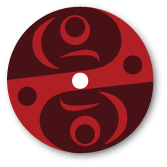By Alexa Walker
It's been a busy year for the Bioarchaeology, Genetics, and Intellectual Property Working Group as we continue to make progress with a number of new initiatives, including a workshop planned for 2015 and several factsheets that will help to address issues emerging within the realm of bioarchaeology and genetics.
To help advance these initiatives, the working group has expanded its ranks. After being involved with IPinCH for a year in other capacities, I joined the group as a Research Assistant in September 2013. In February 2014 Daryl Pullman (Memorial University) was joined by Dorothy Lippert (Smithsonian National Museum of Natural History) and Alan Goodman (Hampshire College) as co-chairs of the working group.
We're excited to be moving forward with plans to hold a workshop in the spring of 2015 (location to be determined). This workshop will tackle issues specifically related to the complex entanglement of genetics with understandings of ancestry, identity, and diversity. We intend to bring in experts from around the world and across disciplines to help us break down these complex topics.
Key questions that will be explored during the workshop include: How is genetic information being used to define—or redefine—identity, ancestry, and diversity? What are the ensuing social, ethical, and practical implications of DNA research for descendent communities, First Nations peoples, and other stakeholders? What are the intersections of genetic and cultural identities? What can research examples such as that of Kwäday Dän Ts'ìnchi (Long Ago Person Found) or the Clovis period child from the Anzick site teach us about moving forward with genetic studies through collaborative research?
Stay tuned for more details on this workshop.
The Bioarchaeology, Genetics, and Intellectual Property Working Group will also be contributing to IPinCH’s growing list of fact sheets. We'll provide information on key issues emerging within the realm of genetics, IP, and bioarchaeology, which will serve as a convenient resource for community members, researchers, and policy makers. The first fact sheet will address issues relating to the ethics of genetic bioarchaeological research and the second will detail in plain language the complexity of intellectual property law as it applies to individuals and communities who may be considering participating in genetic research.
For more information, visit the Bioarchaeology, Genetics, and Intellectual Property Working Group webpage.






